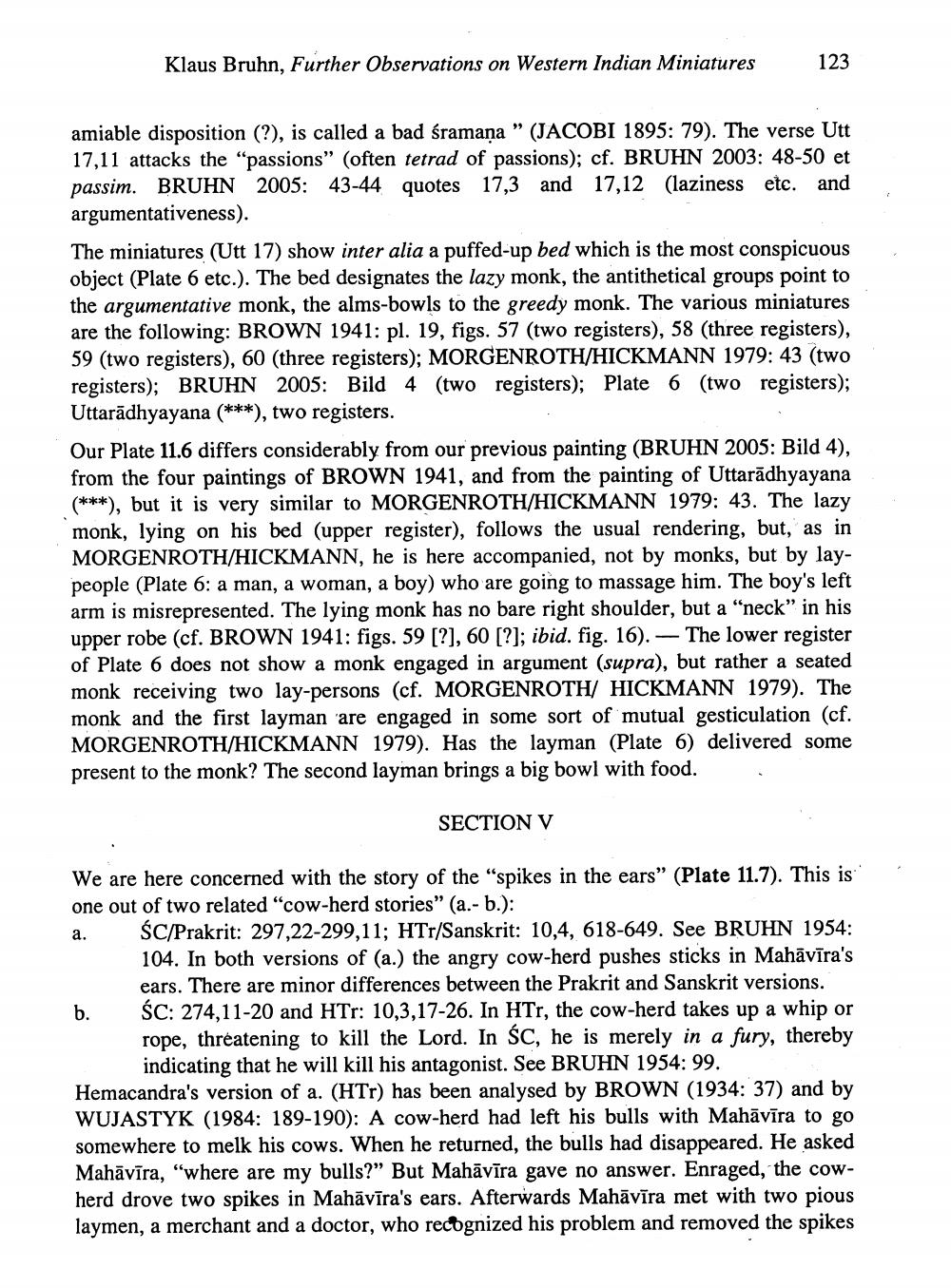________________
Klaus Bruhn, Further Observations on Western Indian Miniatures
123
amiable disposition (?), is called a bad śramana " (JACOBI 1895: 79). The verse Utt 17,11 attacks the "passions" (often tetrad of passions); cf. BRUHN 2003: 48-50 et passim. BRUHN 2005: 43-44 quotes 17,3 and 17,12 (laziness etc. and argumentativeness).
The miniatures (Utt 17) show inter alia a puffed-up bed which is the most conspicuous object (Plate 6 etc.). The bed designates the lazy monk, the antithetical groups point to the argumentative monk, the alms-bowls to the greedy monk. The various miniatures are the following: BROWN 1941: pl. 19, figs. 57 (two registers), 58 (three registers), 59 (two registers), 60 (three registers); MORGENROTH/HICKMANN 1979: 43 (two registers); BRUHN 2005: Bild 4 (two registers); Plate 6 (two registers); Uttaradhyayana (***), two registers.
Our Plate 11.6 differs considerably from our previous painting (BRUHN 2005: Bild 4), from the four paintings of BROWN 1941, and from the painting of Uttarädhyayana (***), but it is very similar to MORGENROTH/HICKMANN 1979: 43. The lazy monk, lying on his bed (upper register), follows the usual rendering, but, as in MORGENROTH/HICKMANN, he is here accompanied, not by monks, but by laypeople (Plate 6: a man, a woman, a boy) who are going to massage him. The boy's left arm is misrepresented. The lying monk has no bare right shoulder, but a "neck" in his upper robe (cf. BROWN 1941: figs. 59 [?], 60 [?]; ibid. fig. 16). The lower register of Plate 6 does not show a monk engaged in argument (supra), but rather a seated monk receiving two lay-persons (cf. MORGENROTH/ HICKMANN 1979). The monk and the first layman are engaged in some sort of mutual gesticulation (cf. MORGENROTH/HICKMANN 1979). Has the layman (Plate 6) delivered some present to the monk? The second layman brings a big bowl with food.
SECTION V
b.
We are here concerned with the story of the "spikes in the ears" (Plate 11.7). This is one out of two related "cow-herd stories" (a.- b.):
a.
ŚC/Prakrit: 297,22-299,11; HTr/Sanskrit: 10,4, 618-649. See BRUHN 1954: 104. In both versions of (a.) the angry cow-herd pushes sticks in Mahāvīra's ears. There are minor differences between the Prakrit and Sanskrit versions. ŚC: 274,11-20 and HTr: 10,3,17-26. In HTr, the cow-herd takes up a whip or rope, threatening to kill the Lord. In SC, he is merely in a fury, thereby indicating that he will kill his antagonist. See BRUHN 1954: 99. Hemacandra's version of a. (HTT) has been analysed by BROWN (1934: 37) and by WUJASTYK (1984: 189-190): A cow-herd had left his bulls with Mahāvīra to go somewhere to melk his cows. When he returned, the bulls had disappeared. He asked Mahāvīra, "where are my bulls?" But Mahāvīra gave no answer. Enraged, the cowherd drove two spikes in Mahavira's ears. Afterwards Mahāvīra met with two pious laymen, a merchant and a doctor, who recognized his problem and removed the spikes




